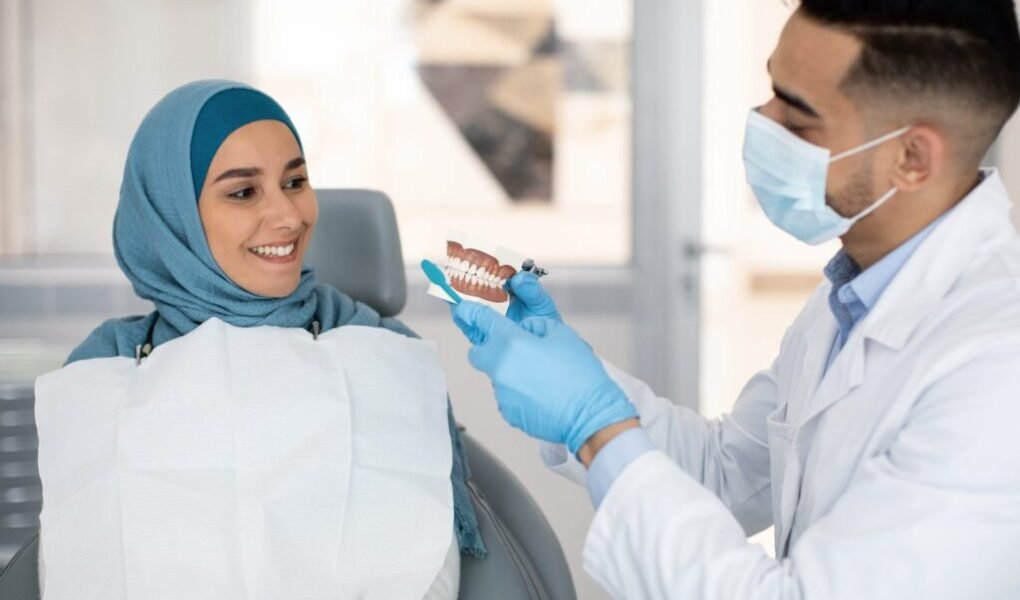Is your dental care team using outdated tools that miss critical oral health changes? Many people assume all dentists use modern equipment, but that’s not always true. Some still rely on old tools, old X-ray systems, and old methods that may not catch early signs of tooth decay, gum disease, or alignment problems. Modern dentistry moves fast, and updated tools can detect issues long before you feel pain or see warning signs.
A strong family dentist uses advanced tools that help catch problems early, track long-term health, and make your visit more comfortable. When a dentist sticks to outdated equipment, you may miss key information about your smile. This article explains how old tools create risks, what modern technology does better, and how choosing the right dental team protects your oral health for years.
Why Dental Technology Matters More Than You Think
Modern Tools Detect Problems Earlier
New tools like digital X-rays, intraoral cameras, and 3D imaging can see tiny cracks, hidden cavities, and gum changes.
Updated Tools Make Visits Faster and More Comfortable
Modern technology allows quicker scans, easier exams, and less discomfort.
Better Tools Help Dentists Track Oral Health Over Time
Digital tools save detailed records that help your dentist compare changes from visit to visit.
Outdated Tools Many Dentists Still Use
Old Film X-Rays That Miss Small Problems
Older X-rays show less detail. Small cavities, cracks, or bone changes may not show up.
Manual Charts Instead of Digital Records
Paper charts can be incomplete or hard to compare over time.
Basic Mirrors Instead of Intraoral Cameras
A small mirror can’t show what a camera can capture in HD.
Old Scaling Tools That Are Less Effective
Outdated cleaning tools may leave behind plaque or tartar.
Signs Your Dentist May Be Using Outdated Technology
They Still Use Film X-Rays
Film takes longer, shows less detail, and exposes you to more radiation.
You Never See Images of Your Teeth During Appointments
If your dentist doesn’t show you photos or screens, they may not have the right tools.
Your Appointments Feel Rushed or Repetitive
Outdated tools make it harder to track progress or spot changes.
You Don’t Receive Digital Treatment Plans or Progress Notes
A modern office uses digital tracking to create clear, updated plans.
Risks of Using Outdated Dental Tools
Hidden Cavities That Grow Without Warning
Old imaging tools may miss early decay in tight spaces or under fillings.
Gum Disease That Isn’t Detected Early Enough
Old tools don’t show subtle changes in bone and gum tissue.
Cracks and Fractures That Go Unnoticed
Tiny cracks can turn into big breaks if not caught early.
Incorrect Diagnoses or Missed Problems
Without clear images, your dentist may guess instead of knowing.
Modern Tools Your Dentist Should Be Using
Digital X-Rays for Clear, Fast Results
Digital scans show fine details, use less radiation, and appear instantly on a screen.
Intraoral Cameras for High-Definition Images
These tiny cameras show cracks, decay, or plaque the eye can’t see.
3D Cone Beam Scans for Accurate Tooth and Bone Imaging
3D imaging helps diagnose complex issues with high accuracy.
Digital Charting for Long-Term Tracking
Digital notes help track gum depth, enamel changes, and oral health progress.
How Updated Tools Improve Your Exams
Your Dentist Can Show You Problems in Real Time
Seeing your teeth on a screen helps you understand the problem better.
Small Issues Are Caught Before They Become Serious
Modern tools spot issues early, lowering long-term treatment needs.
Treatment Is More Accurate and Less Painful
Better tools mean less guesswork and more precision.
Dental Visits Are Faster and Smoother
Digital tools save time and reduce waiting.
How Outdated Tools Affect Children’s Dental Care
Missed Alignment or Growth Problems
Kids’ teeth change fast. Old tools may miss small alignment issues.
Slower Exams Increase Anxiety
Kids benefit from fast, kid-friendly tools.
Hard-to-See Cavities Spread Faster
Early decay in kids moves quickly if not detected soon.
Less Accurate Tracking of Tooth Development
Growth patterns need high-quality imaging to understand.
Why Adults Need Modern Dental Technology
Adults Face Higher Risks of Gum Disease
Digital tools track gum pocket changes over time.
Grinding and Wear Need Detailed Monitoring
Tiny chips or flattened surfaces are easier to see with HD tools.
Older Fillings Hide Problems Beneath Them
Digital scans detect decay forming under older dental work.
Bone Loss Needs Accurate 3D Tracking
Modern tools can see bone changes early, helping prevent tooth loss.
How Modern Tools Help Seniors Maintain Oral Health
Tracking Denture Fit and Bone Structure
3D imaging helps check denture comfort and stability.
Spotting Dry Mouth Issues
Technology helps detect early signs of dry mouth, which can increase decay.
Monitoring Gum Recession
Digital tools track gum movement over months and years.
Detecting Root Cavities Early
Root decay is common in seniors and requires early detection.
Benefits of Choosing a Dentist With Updated Tools
More Accurate Diagnoses
Clear images lead to confident and precise treatment.
Lower Costs Over Time
Early detection prevents expensive procedures later.
More Comfortable Visits
Modern tools make cleanings and exams easier.
Better Communication and Education
You can see your problems clearly and understand your plan.
How to Tell If Your Dentist Is Using the Right Technology
Ask to See Your X-Rays on a Screen
If they can’t show digital images, that’s a sign of outdated equipment.
Look for Intraoral Cameras in the Treatment Room
These cameras should be standard for modern exams.
Notice Whether the Office Uses Digital Notes
Digital charting improves recordkeeping and long-term tracking.
Check for Modern Cleaning Tools
Ultrasonic scalers clean teeth faster and more comfortably.
How Modern Tools Support Preventive Care
Digital Tools Help Track Trends Over Time
Dentists can compare before-and-after images to monitor progress.
High-Quality Images Help Identify Risk Areas
Digital tools highlight weak enamel, deep grooves, or gum changes.
Preventive Treatments Become More Targeted
Your dentist knows exactly where fluoride or sealants are needed.
You Receive Personalized Advice Based on Data
Data-driven care is more accurate and effective.
When It’s Time to Look for a New Dentist
Your Dentist Still Uses Film X-Rays
This is a major sign of outdated care.
They Don’t Explain What They See or Show Images
Modern care should be visual and educational.
Your Treatments Don’t Improve Over Time
If problems keep returning, something may be missing.
You Feel Rushed or Unsure After Appointments
Good communication is a sign of good care.
Questions to Ask Your Dentist About Their Technology
Do you use digital X-rays or film?
Digital is safer and clearer.
Can I see my teeth on a screen during the exam?
You should be able to view images.
Do you track changes between visits?
Tracking is essential for long-term health.
Do you use cameras or scanners to detect early problems?
Early detection lowers treatment needs.
Conclusion
If your dental care team is using outdated tools, you may be missing important signs of change in your oral health. Modern digital X-rays, intraoral cameras, 3D imaging, and digital charting offer a higher level of accuracy and comfort. They help your dentist track long-term patterns, find issues early, and customize care for every family member.
Outdated tools may miss small cavities, gum disease, fractures, or early alignment issues—problems that can grow quietly. By choosing a dentist who uses updated technology, you protect your smile with better detection, better tracking, and better long-term results. Your oral health deserves modern care, not outdated tools that leave risks hidden.




